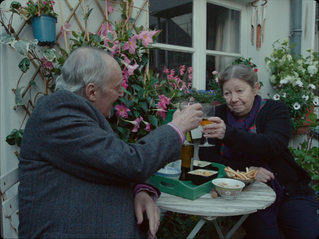Edvard Munch
- Emma Olsson
- Aug 18, 2021
- 3 min read
Peter Watkins, 1974

Coughs, tears, sweat, and blood colour young Edvard Munch’s home life. These signs of bodily terror follow him, haunting, perched on a stoop, ready to greet him when he comes home. As he grows older, Munch drifts in and out of countries, romantic relationships, and artistic ideals. But the threat of death is a constant for the artist, coursing through life’s ups and downs. Together, these moments form what he calls the “frieze of life.”
In his 1974 biopic of the artist, filmmaker Peter Watkins takes note of this symbiotic relationship. He crafts delicate supercuts to convey the feeling of anxiety that begins to lurk in young Munch’s life; eventually, it will become the prevailing force. As the twentieth century approaches, Munch’s artistic vision—the one he will pursue for the rest of his career—begins to crystallise.
His “frieze of life”—the name of a group of works exhibited in Germany, but also a fervent artistic intent—will depict human relationships, fractured communication, jealousy, life, and death as characters in a dance, never quite able to look each other in the eyes, always on the cusp of making a connection but never able to do so.
In his film, Watkins speaks Munch’s artistic philosophy back to him. It is a collection of vignettes blurring the line between documentary and drama, guided by unenthused narration that lets the scenes do the talking. It is through these scenes—snippets of a conversation cut short, shots of dancers performing for a heady audience, flickers of paint on a canvas—that Munch’s frieze begins to materialise.

The film focuses on the early years of Munch’s life, forging a path from his grief-stricken childhood to his early-thirties at the dawn of the twentieth century. Taking a cue from Munch, Watkins chooses a handful of flashpoints to shepherd viewers through the film. These include the deaths of Munch’s mother and sister, the barrage of negative reception to his art from conservative critics, and his decade-spanning affair with an older, married woman referred to as Mrs. Heiburg. Through these grounding moments of the film, we sway forwards and backwards with the melodrama, locking arms and letting go. At any moment, the dance could be interrupted by tragedy.
Edvard Munch transports us to a parlour: smoking, drinking, and watching a performance of the can-can, only to intercept our enjoyment with images of Munch’s dying sister on her sickbed, flocked by dutiful attendants for whom mourning has become quotidian, no longer emotional but practical: you wet the forehead of the dying, you catch the blood in a cloth, you sit in silence when it is over. All the while, the boisterous music of the can-can continues to play.
Somehow these moments of ambivalent tragedy are what most invigorate the film. Another filmmaker might have used them to shock viewers, or to instil sadness. But Watkins, like Munch, knows how to harness the power of a harsh reality, how to use them to propel the art.
“This isn’t art, but dirt,” said one of Munch’s critics, following an exhibition in the Norwegian capital. This isn’t art—isn’t life—but dirt, thinks Munch when his family is dying of violent sickness; when his lover won’t leave her husband and commit to him; when his starving wish to enjoy life is met with despair. With reverence, Watkins collects the dirt. He hands it to us as a gift.








Comments